Chili Crushed 1kg
Crushed chili, also known as crushed red pepper flakes or chili flakes, is a popular spice used to add heat and flavor to a wide variety of dishes. Here are some of the most common uses of chili crushed:
- Seasoning: Crushed chili is commonly used as a seasoning to add spiciness to dishes. It can be sprinkled directly onto foods such as pizza, pasta, soups, stews, and roasted vegetables to provide a kick of heat and enhance the overall flavor.
- Sauces and Marinades: Crushed chili can be added to sauces and marinades to add heat and depth of flavor. It can be used in pasta sauces, stir-fry sauces, barbecue sauces, and marinades for meats, seafood, or tofu.
- Mexican and Tex-Mex Dishes: Crushed chili is a staple in Mexican and Tex-Mex cuisines. It is often used in dishes like chili con carne, tacos, enchiladas, salsas, and guacamole to give them a spicy kick.
- Seasoned Oils and Vinegars: Crushed chili can be infused into oils or vinegars to create flavored versions. These infused oils or vinegars can be used in salad dressings, marinades, or drizzled over dishes to add heat and flavor.
- Pickling and Fermenting: Crushed chili can be added to pickling brines or used in the fermentation process to add heat and spice to pickled vegetables, kimchi, sauerkraut, and other fermented foods.
- Spice Blends and Rubs: Crushed chili is a common ingredient in various spice blends and rubs. It can be combined with other spices and herbs to create flavorful blends for seasoning meats, poultry, or vegetables before grilling, roasting, or pan-searing.
- Asian Cuisine: Crushed chili is used in many Asian dishes to add heat and flavor. It can be found in recipes from countries like Thailand, India, China, and Korea. It is commonly used in curries, stir-fries, noodle dishes, and spicy sauces.
- Bloody Mary Cocktails: Crushed chili is a popular ingredient in Bloody Mary cocktails. It adds spiciness and complexity to the drink, enhancing its flavor profile.
When using crushed chili, it’s important to keep in mind that the level of spiciness can vary depending on the type and variety of chili used. It’s advisable to start with a small amount and adjust according to personal taste preferences and desired heat level.
Green pea flour, also known as pea flour or pea protein powder, is made from ground green peas and is a versatile ingredient. Here are some of the most common uses of green pea flour:
- Gluten-Free Baking: Green pea flour can be used as a gluten-free alternative to wheat flour in baking recipes. It can be incorporated into gluten-free bread, muffins, pancakes, and cookies, providing structure and texture to the baked goods.
- Thickening Agent: Green pea flour can be used as a thickening agent in soups, stews, and sauces. It can be added to thicken the consistency of these dishes, providing a smooth and velvety texture.
- Protein Supplement: Green pea flour is rich in protein and can be used as a protein supplement. It can be added to smoothies, shakes, or protein bars to increase the protein content of these foods.
- Vegan and Vegetarian Recipes: Green pea flour can be used in vegan and vegetarian recipes as a binder or filler. It can be used as an egg substitute in recipes, helping to bind ingredients together in dishes like veggie burgers, meatballs, or veggie patties.
- Baby Food: Green pea flour can be used in homemade baby food recipes. It can be added to purees or porridge to increase the nutritional content, especially protein and fiber.
- Snacks and Crackers: Green pea flour can be used to make healthy snacks and crackers. It can be combined with other ingredients like herbs, spices, and oil to create flavorful and nutritious snack options.
- Pasta and Noodles: Green pea flour can be used in the production of gluten-free pasta and noodles. It can be combined with other gluten-free flours to create a dough that can be shaped into various pasta shapes.
- Coating and Breading: Green pea flour can be used as a coating or breading for vegetables, tofu, or meat substitutes. It adds a crispy texture and a subtle pea flavor when used in frying or baking.
Green pea flour is a nutritious and gluten-free alternative to traditional flours. It provides a good amount of protein, fiber, and other essential nutrients. Its mild flavor and versatile nature make it suitable for a wide range of culinary applications.
Dried bay leaves are a popular herb used in cooking for their distinctive flavor and aroma. Here are some of the most common uses of dried bay leaves:
- Soups, Stews, and Broths: Dried bay leaves are often added to soups, stews, and broths to infuse them with a subtle, herbal flavor. They can be added whole during cooking and removed before serving, as bay leaves are typically not consumed.
- Sauces and Gravies: Bay leaves can be used to flavor sauces, gravies, and simmered dishes. Adding a dried bay leaf or two to the cooking process can enhance the overall flavor profile of the dish.
- Rice and Grain Dishes: Bay leaves can be added to rice and grain dishes such as pilaf, biryani, or risotto to impart a fragrant taste. They can be added during cooking and removed before serving, similar to their use in soups and stews.
- Meat and Poultry Preparations: Dried bay leaves can be used in meat and poultry preparations. They can be added to marinades, rubs, or brines to infuse the flavors into the meat before cooking. Bay leaves can also be included in slow-cooked dishes like pot roast or braised meats.
- Bean and Lentil Dishes: Bay leaves are commonly used in bean and lentil dishes. Adding a dried bay leaf or two during the cooking process can enhance the flavor of the beans or lentils and help reduce gas-causing compounds.
- Pickling and Preserving: Bay leaves can be used in pickling and preserving various foods such as cucumbers, beets, or olives. They contribute to the overall flavor and help keep the preserved foods fresh.
- Herbal Teas and Infusions: Dried bay leaves can be used to make herbal teas and infusions. When steeped in hot water, they release their aromatic compounds, resulting in a soothing and flavorful beverage.
- DIY Potpourri and Home Fragrances: Dried bay leaves can be used in homemade potpourri or added to simmering water with other aromatic ingredients like citrus peels, spices, or herbs to create a pleasant fragrance in the home.
Remember that dried bay leaves are meant to enhance the flavor of dishes and are not typically consumed as they can be tough and have a slightly bitter taste. It’s best to remove the bay leaves before serving the dish.
Mocaf flour, also known as modified cassava flour or fermented cassava flour, is a versatile gluten-free flour made from cassava root. Here are some of the most common uses of mocaf flour:
- Baking: Mocaf flour can be used as a substitute for wheat flour in baking recipes to create gluten-free versions of various baked goods. It can be used to make bread, cakes, cookies, muffins, and other pastries.
- Thickening Agent: Mocaf flour can be used as a thickening agent in sauces, gravies, and soups. It helps to create a smooth and slightly thickened consistency in these dishes.
- Coating and Breading: Mocaf flour can be used as a coating or breading for fried foods. It adds a crispy texture and can be seasoned with herbs and spices for added flavor. It works well with vegetables, meats, and seafood.
- Pancakes and Waffles: Mocaf flour can be used to make gluten-free pancakes and waffles. It provides a light and fluffy texture while giving a nutty flavor to the breakfast treats.
- Noodles and Pasta: Mocaf flour can be used in the production of gluten-free noodles and pasta. It can be combined with other gluten-free flours or starches to create a dough that can be rolled and shaped into various pasta shapes.
- Snacks and Crackers: Mocaf flour can be used to make gluten-free snacks and crackers. It can be combined with other ingredients such as herbs, spices, and oils to create flavorful and crispy snack options.
- Binders and Thickeners: Mocaf flour can be used as a binder and thickener in gluten-free recipes. It can help hold ingredients together in dishes like veggie burgers, meatballs, or veggie patties. It can also be used to thicken sauces, puddings, and custards.
- Fermented Products: Mocaf flour can be used in the production of fermented products like sourdough bread or fermented cassava snacks. Its use in fermentation processes helps enhance the flavor and texture of these foods.
Mocaf flour is a nutritious option that is naturally gluten-free and rich in fiber. It can be a suitable alternative for individuals with gluten sensitivities or those following a gluten-free diet.
Organic nutritional yeast is a popular ingredient used in various culinary applications, especially in plant-based and vegan cooking. Here are some of the most common uses of organic nutritional yeast:
- Vegan Cheese Substitute: Nutritional yeast is often used as a cheese substitute in vegan recipes. It has a cheesy, nutty flavor that can be sprinkled over dishes like pasta, salads, or roasted vegetables to provide a savory and umami taste.
- Seasoning and Flavor Enhancer: Nutritional yeast can be used as a seasoning and flavor enhancer in a wide range of dishes. It can be added to soups, stews, sauces, dressings, and marinades to give them a rich and savory taste.
- Popcorn Topping: Nutritional yeast can be used as a delicious and healthy topping for popcorn. It adds a cheesy and slightly nutty flavor to the popcorn, making it a popular choice for a nutritious snack.
- Vegan “Parmesan” Cheese: Nutritional yeast can be combined with nuts, seeds, or other ingredients to create a vegan “Parmesan” cheese alternative. This mixture can be sprinkled on top of pasta, pizza, or salads to provide a cheesy and flavorful topping.
- Baking: Nutritional yeast can be incorporated into baked goods to add flavor and nutritional value. It can be used in bread, pizza dough, savory muffins, or crackers to enhance the taste profile.
- Plant-Based Protein Source: Nutritional yeast is a good source of plant-based protein and can be used to boost the protein content of meals. It can be added to smoothies, protein bars, or protein shakes to provide a nutrient-rich boost.
- Vegan “Egg” Substitute: Nutritional yeast can be used as an egg substitute in certain recipes. When combined with other ingredients like chickpea flour and water, it can mimic the binding properties of eggs in dishes like vegan omelets or frittatas.
- Salad Dressings and Dips: Nutritional yeast can be added to salad dressings and dips to enhance their flavor. It can be combined with ingredients like olive oil, lemon juice, garlic, and herbs to create flavorful dressings and dips for salads or raw vegetables.
Organic nutritional yeast is prized for its rich nutritional profile, including B vitamins, protein, and minerals. It is a versatile ingredient that can be used to add flavor, nutrition, and a cheesy taste to a variety of dishes.
Gelatin powder is a versatile ingredient that is commonly used in cooking and baking for its gelling and thickening properties. Here are some of the most common uses of gelatin powder:
- Gelatin Desserts: Gelatin powder is often used to make gelatin desserts, such as fruit-flavored gelatin molds, jelly, or panna cotta. When dissolved in liquid and refrigerated, gelatin sets and forms a firm, yet jiggly texture.
- Pies and Tarts: Gelatin can be used to create a gel-like filling for pies and tarts, such as cream pies or fruit tarts. It helps the filling hold its shape and provides a smooth and consistent texture.
- Mousses and Puddings: Gelatin is commonly used to make mousses and puddings. It helps to set the dessert, giving it a light and airy texture. Gelatin can be used to make chocolate mousse, fruit mousse, or creamy puddings.
- Marshmallows and Marshmallow Treats: Gelatin is a key ingredient in making marshmallows and marshmallow treats. It provides the characteristic chewy and spongy texture of marshmallows when combined with sugar, water, and other flavorings.
- Whipped Cream Stabilizer: Gelatin can be used as a stabilizer in whipped cream. By incorporating gelatin into the whipped cream, it helps the cream hold its shape and prevents it from deflating or weeping.
- Homemade Jams and Jellies: Gelatin can be added to homemade jams and jellies to improve their texture and firmness. It helps the fruit mixture set and creates a spreadable consistency.
- Aspic and Terrines: Gelatin is used in savory dishes like aspic and terrines to set and bind the ingredients together. Aspic is a savory jelly often made with gelatin, broth, and various ingredients like meat or vegetables.
- Health Supplements and Gummies: Gelatin is used in the production of health supplements, vitamins, and gummy candies. It provides the necessary structure and texture for these products.
When using gelatin powder, it is important to follow the instructions on the packaging for proper hydration and setting. Gelatin usually needs to be dissolved in liquid, heated, and then allowed to cool and set. It’s worth noting that gelatin is derived from animal sources, typically from collagen in animal bones and tissues, so it’s not suitable for vegetarians or vegans. Alternatives like agar-agar or plant-based gelling agents can be used as substitutes in vegetarian or vegan recipes.

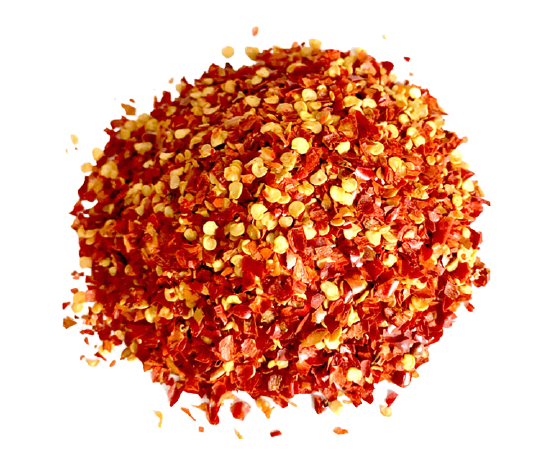
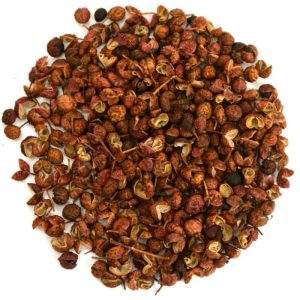
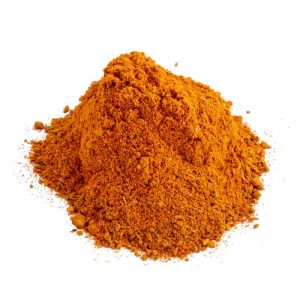
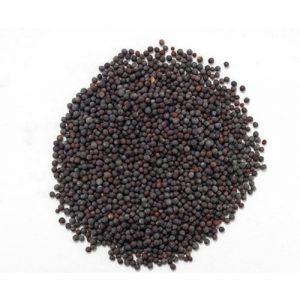
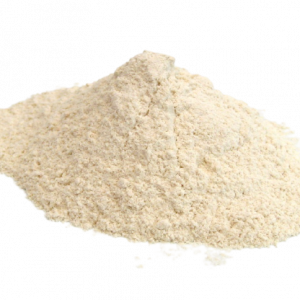
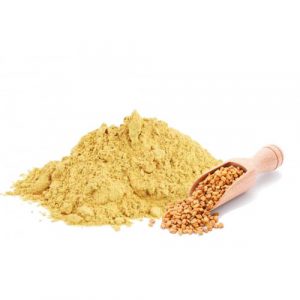
Reviews
There are no reviews yet.